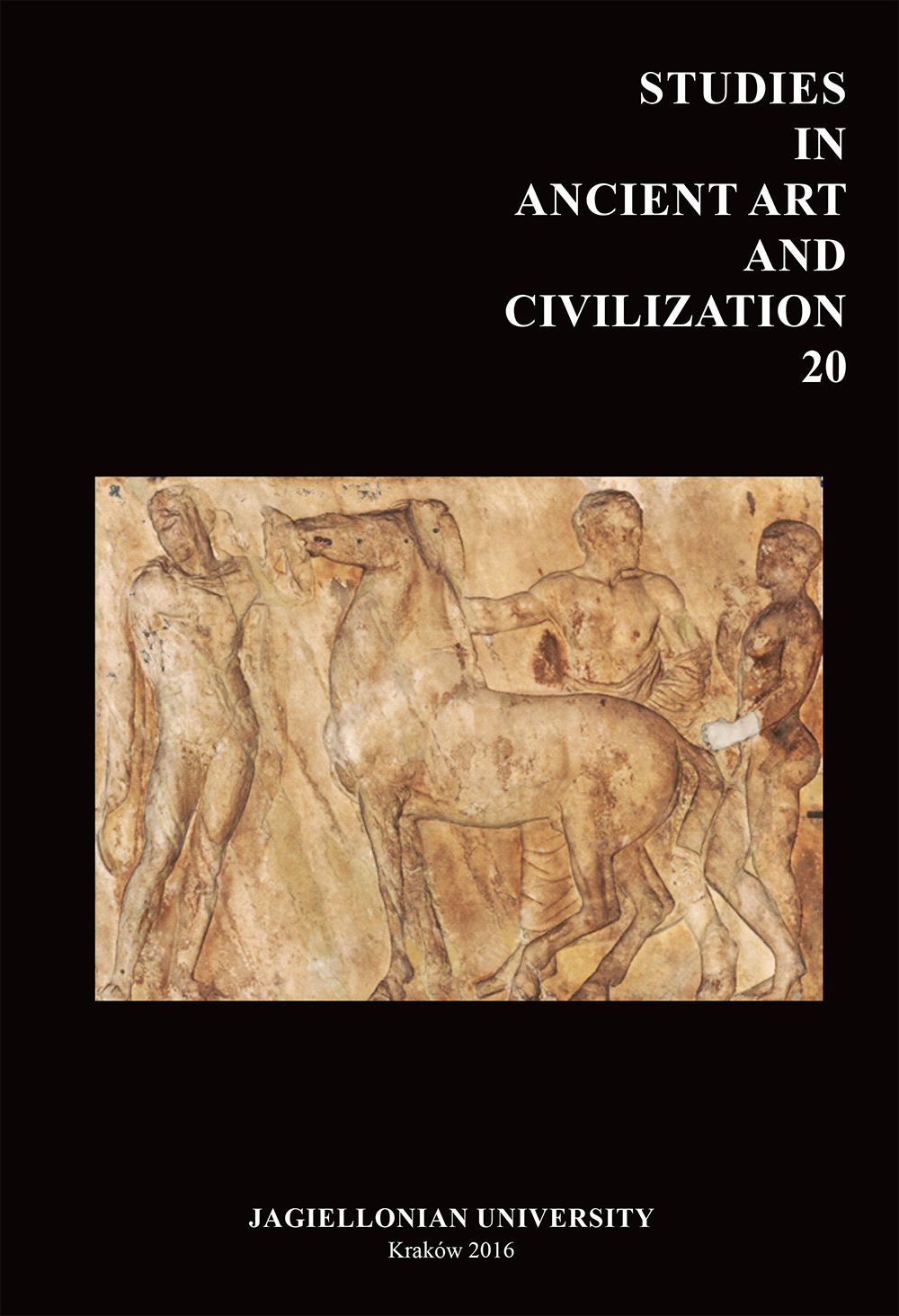Investigation on the Implementation of Optical Refinements in the Partrthenon Frieze Reliefs
DOI:
https://doi.org/10.12797/SAAC.20.2016.20.03Keywords:
Parthenon west frieze, perspective distortion, anthropometric proportions, optical refinementsAbstract
Issues related to visual representations as perspective distortions, optical illusions and refinements were known in antiquity, since a number of architectural monuments are illustrative of such practices. The Parthenon of Acropolis in Athens is a relevant example where this knowledge was probably applied. The present paper aims at providing analytically documented evidence of whether optical refinements were considered in adjusting the background level inclination of the Parthenon west frieze reliefs and in the design of the carved human figures. For this reason, the implementation of optical refinements for avoiding perspective distortions is elucidated and the calculations for their prediction described. Employing this mathematical analysis, optical refinements related to the west frieze reliefs and their background inclination were determined. These diminish optical illusions when a region of the frieze blocks’ is observed from a viewpoint on the stylobates’ level between two columns. Also presented are characteristic anthropometric proportions per interna- -tional standards, and their modifications when optical refinements are applied. These modified proportions of a human body are compared to those of human figures carved on the Parthenon west frieze blocks. The latter were determined via evaluation of their digital data obtained by means of 3D laser scanning. What was revealed, was an impressive conformity between the reliefs’ background inclination along with the depicted human body proportions of the Parthenon frieze, and the corresponding ones calculated for avoiding optical illusions due to perspective distortions. These findings give substantial weight to the hypothesis that optical refinements were implemented in the Parthenon west frieze. However, they cannot exclude the fact that the human body proportions followed aesthetic rules and norms of the Parthenon construction period.
References
Kokkorou-Alevra G. 1990. Κοκκορού-Αλεβρά Γ. Η Τέχνη της Αρχαίας Ελλάδας. Σύντομη Ιστορία, 1050-50 π.Χ. Athens.
Ashmole R. 1972. Architect and Sculptor in Classical Greece. London.
Bouras Ch. Th. 1998. Μπούρας Χ. Θ. Μαθήματα Ιστορίας της Αρχιτεκτονικής 1. Athens.
Bouzakis K.-D., Pantermalis D., Mirisidis I., Grigoriadou M., Varitis E., Sakellaridou A., Bouzaki A., Efstathiou K., Theodoridou S., Papacharisi A. and Diamanti E. 2016. 3D-laser scanning of the Parthenon west frieze blocks and their digital assembly based on extracted characteristic geometrical details. JAS 6, 94–108. DOI: https://doi.org/10.1016/j.jasrep.2016.01.030
Cameron J. R., Skofronick J. G. and Grant R. M. 1999. Physics of the Body. Madison, WI (2nd ed.). DIN 33402-2 2005. Ergonomie – Koerper des Menschen. Teil 2: Werte. Berlin.
Fletcher B. and Sir A. (ed.) 1996. A History of Architecture. London.
Jenkins I. 1994. The Parthenon Frieze. London.
Korres M. 1999. Refinements of refinements. In L. Haselberger (ed.), Proceedings of the Second Williams Symposium on Classical Architecture held at the University of Pennsylvania, Philadelphia, April 2–4, 1993, 79-104. Philadelphia.
Kourniati A.-M. 1998. Κουρνιάτη Α.-Μ.‘Οπτικά’ του Ευκλείδη και προοπτικές απεικονίσεις. (Dissertation at the Faculty of Architecture, National Technical University of Athens). Athens.
Le Corbusier 1986. Towards a New Architecture, trans. F. Etchells. New York.
Marconi C. 2009. The Parthenon frieze: degrees of visibility. Anthropology and Aesthetics 55/56, 156–173. DOI: https://doi.org/10.1086/RESvn1ms25608841
Neufert E. 2000. Architects’ Data, revised by B. Baiche and N. Walliman. Malden, MA (3rd ed.).
Orlandos Α. Κ. 1977. Ορλάνδος Α. Κ. Η Αρχιτεκτονική του Παρθενώνος Β. (Βιβλιοθήκη της εν Αθήναις Αρχαιολογικής Εταιρείας 86). Athens.
Orlandos A. K. 1978. Ορλάνδος Α. Κ. Η Αρχιτεκτονική του Παρθενώνος Γ. (Βιβλιοθήκη της εν Αθήναις Αρχαιολογικής Εταιρείας 86). Athens.
Osborne R. 1987. The viewing and obscuring of the Parthenon frieze. JHS 107, 98–105. DOI: https://doi.org/10.2307/630073
Stillwell R. 1969. The Panathenaic frieze: optical relations. Hesperia 38, 231–241. DOI: https://doi.org/10.2307/147419
Zwijnenberg R. 1999. The Writings and Drawings of Leonardo da Vinci. Order and Chaos in Early Modern Thought. Cambridge.






